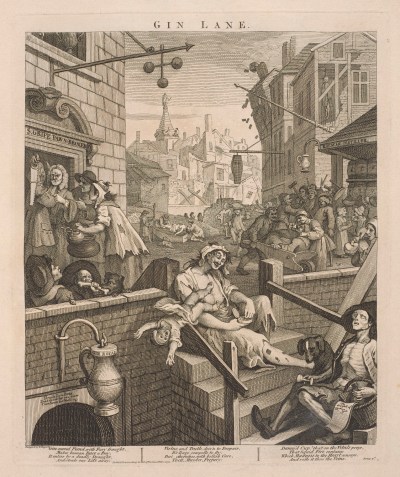
William Hogarth, The Reward of Cruelty, 1751.
358 mm x 298 mm. © Photo: Royal Academy of Arts, London. Photographer: Prudence Cuming Associates Limited.
This image is not available to download. To licence this image for commercial purposes, contact our Picture Library at picturelibrary@royalacademy.org.uk
The Reward of Cruelty, 1751
William Hogarth (1697 - 1764)
RA Collection: Art
The last of William Hogarth's Four Stages of Cruelty, made with the intention of drawing attention to animal cruelty and, like the contemporaneous Beer Street and Gin Lane, made with the intention of reaching the audience for popular prints. As a result they are not engraved with the refinement typical of Hogarth's prints and were sold less expensively. Paulson notes that the engravings 'have the brutal simplicity of woodcuts' and Hogarth also planned to publish a cheaper set of woodcut versions of the set for wider circulation. Only the last two plates, however, were completed (by a specialist wood-engraver, J. Bell). The verses under each image are probably by Hogarth's friend, the Rev. James Townley.
All four plates centre around the figure of 'Tom Nero' and the way that his increasingly barbaric mistreatment of animals leads to his own downfall after he is apprehended for murder. Here the corpse of Nero is dissected by surgeons in a dissecting theatre. After his apprehension in the previous plate Nero has been executed (indicated by the noose still hanging around his neck) and his body acquired by the Company of Surgeons. Executed criminals provided an important source of bodies for surgeons, as indicated by the skeletons of the 'gentleman highwayman' Macleane and the recently executed boxer James Field hanging in the theatre. The depiction of the scene, with surgeons removing Nero's intestines and gouging out his eye, reinforce the message that Nero, having inflicted pain on others in the first three plates, has finally become the victim. The first plate, meanwhile, in which Nero is just one of the numerous children of the St Giles slum committing similar acts of cruelty, ties in with Hogarth's educational purpose behind these prints, to prevent others from a similar background from following the same path.
Object details
358 mm x 298 mm
Hogarth's prints. Vol. I. - [s.l.]: [n.d.]
Associated works of art
1 results
Start exploring the RA Collection
- Explore art works, paint-smeared palettes, scribbled letters and more...
- Artists and architects have run the RA for 250 years.
Our Collection is a record of them.




